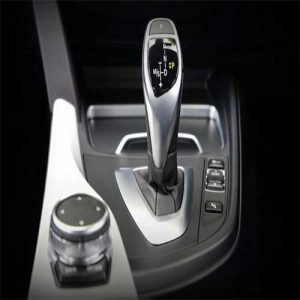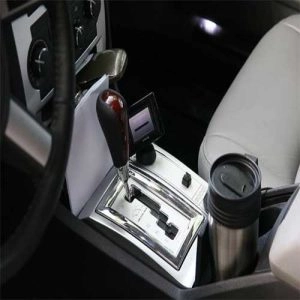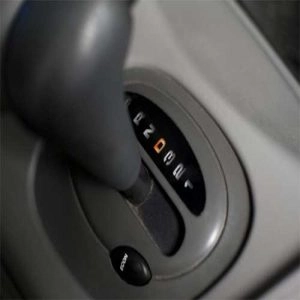Most of us know what automatic transmission is, its importance while driving, and the difference between it and manual transmission. However, many people may not be aware of the types of automatic transmission and its components. Therefore, these topics will be the focus of our discussion in this article.
What is the automatic transmission?

It is an automatic transmission that shifts between many speeds automatically without the need for the driver to intervene to change gears while driving. Generally, it is considered one of the most complex components. Its importance is highlighted by its contribution to effectively utilize the engine's torque, in addition to its role in maintaining the engine's operation at the appropriate speed. Generally, a transmission pan is used to connect the engine with the traditional automatic transmission. Furthermore, the traditional automatic transmission depends on its operation on planetary gears, which are operated by suitable hydraulic components. The TCM control unit controls the operation of the transmission.
Automatic transmission parts

Most people may be familiar with the exterior look of an automatic transmission, but often they are unaware of its internal components, or even their names. For this reason, we will explain in the coming content those parts, and provide you with some information about them. An automatic transmission is a fantastic blend of mechanical and electrical engineering, which gives the driver a wonderful and comfortable driving experience. These parts are:
Transmission Pan
The gear pan is a cylindrical device filled with oil, its function is to transfer the engine power to the transmission. One of its main features is to amplify the torque and absorb vibrations.
Clutches
It is one of the important parts in the automatic transmission, consisting of several friction metal discs. They aid in engaging the gears when pressed together.
Transmission Chip
It refers to an important electro-hydraulic unit that combines the functions of the transmission computer, pressure switches, speed sensors, in addition to the solenoid valves of the transmission brain, and temperature, so that they all become one unit.
Gearbox Brain
The transmission brain, also known as the valve body, resembles a maze, containing numerous passages and channels within it. These passages and channels direct the flow of compressed transmission fluid to various valves. The purpose of this process is to activate commands coming from the gear stick and shift from the current gear to the most suitable gear, depending on the driving condition.
Also read:3 Reasons That Lead to the Damage of Engine Mounts
The Gears
We mentioned in a previous section that the traditional automatic transmission contains planetary gears, which work together to form specific gear ratios. It's worth noting that there is a relationship between these gear ratios in the automatic transmission and the torque. This relationship is inverse; as the gear ratio increases, the torque decreases, and as the gear ratio decreases, the torque increases.
Oil Pump
It is the essential device needed to create internal pressure for fluids, ensure their flow, and is operated by the transmission pan when the engine is running, drawing oil through the filter from the crankcase.
Types of Automatic Transmissions
Now, we will move to an important topic that many are interested in, which is the types of automatic transmissions. Many people are unaware that there are four types of automatic transmissions. These types are:
The traditional automatic transmission AT
This type is the most common among automatic transmissions, and is known as the automatic torque converter. It is widely used in many cars. Its operation depends on changing gears using hydraulic fluids and the transmission pan. The beauty of this type is the ability for smooth and precise control of driving, thanks to the connection of the transmission to the TCM control unit, and with the assistance of the engine control unit, also known as the ECU.
AMT Manual Automatic Transmission
This transmission is manual and relies on the use of sensors and electric valves to automatically shift and engage gears. The downside to this type is that it's slow to shift gears when the car accelerates. Therefore, it may be a good option for driving at low speeds. One of its most notable features is that it significantly reduces fuel consumption, which is why it is used in economy cars.
The CVT Variable Transmission
There are several different types of CVT transmissions, but one particularly common type is designed to use a pair of conical pulleys with a belt between them. As the distance between each pair of cones changes, either by moving closer together or further apart, the gear ratio for these pulleys changes. In addition to this, there is another CVT system that relies on a variable diameter pulley, which is used by some companies.
The renowned Toyota company produces a transmission composed of physical primary gears, like the traditional automatic transmission, then smoothly transitions to a CVT gearbox when changing the speed of the car. This system is used in Corolla vehicles.
DCT Dual Clutch Transmission
The beauty of this type of automatic transmission is that it is a mix of manual and automatic transmission. This type does not contain a transmission pan, instead, it has two separate shafts, along with their own clutches. These parts are used to change gears, with one part specializing in odd gears and the other in even gears.

Before concluding, it should be noted that some may haveTypes of Automatic TransmissionsThere are other symbols that were not mentioned in this article due to their abundance.

Comments